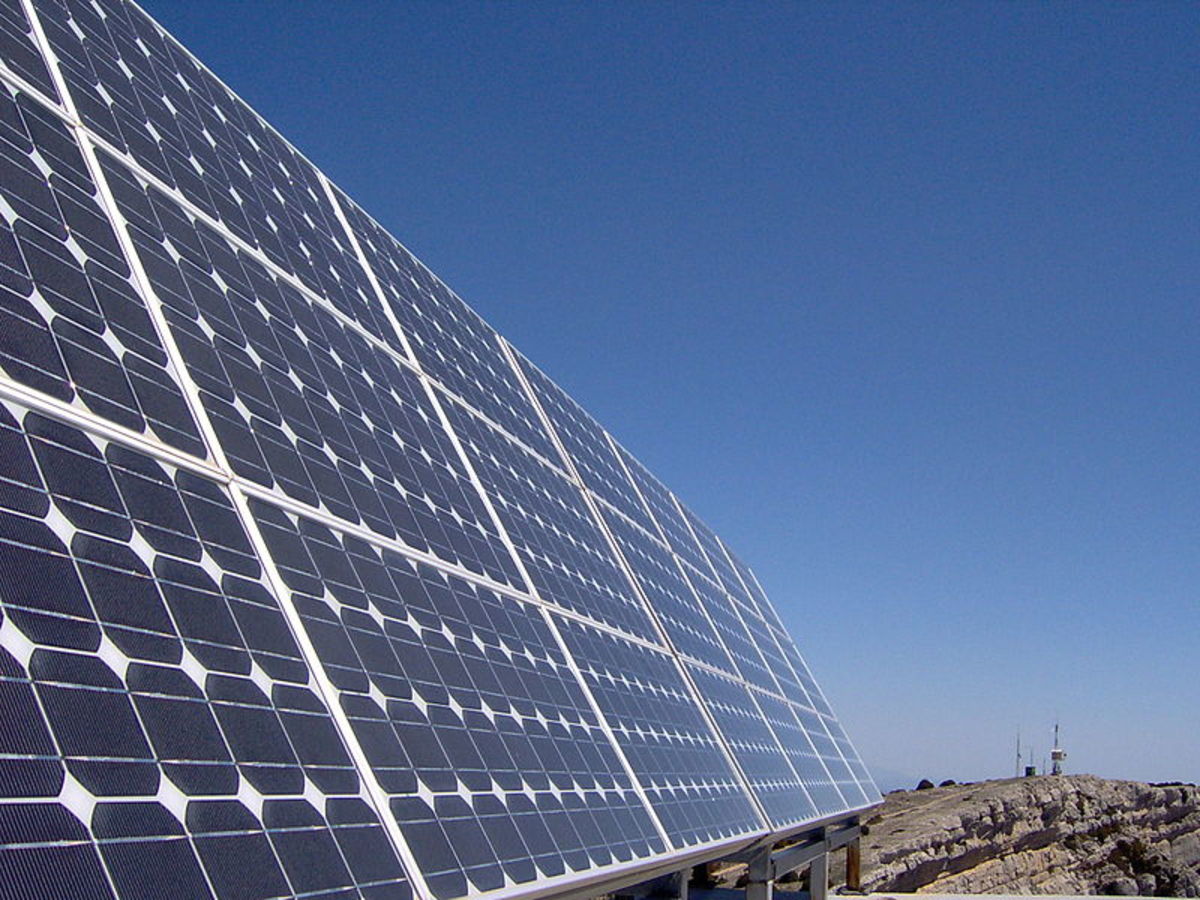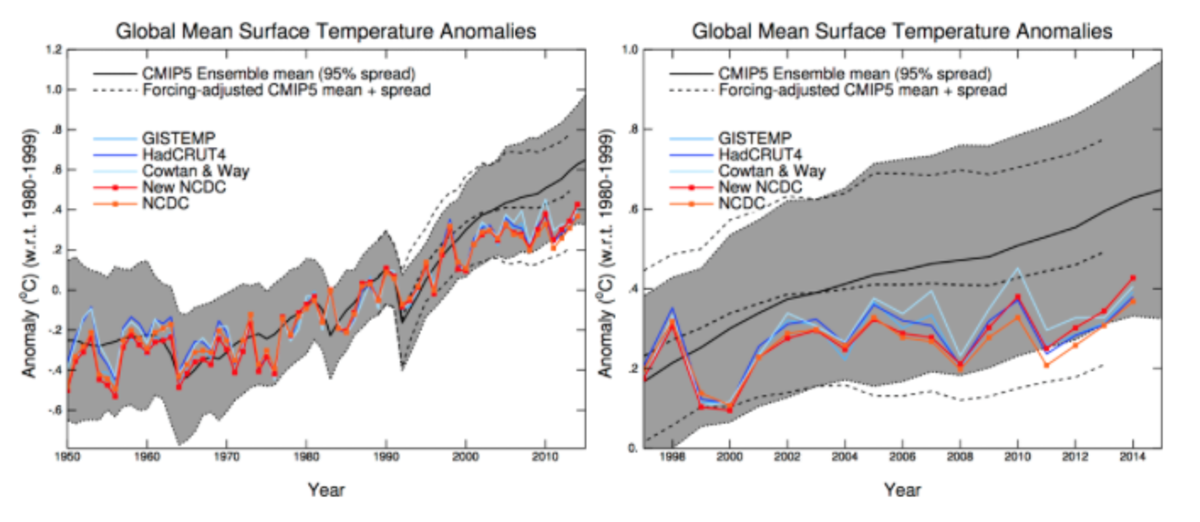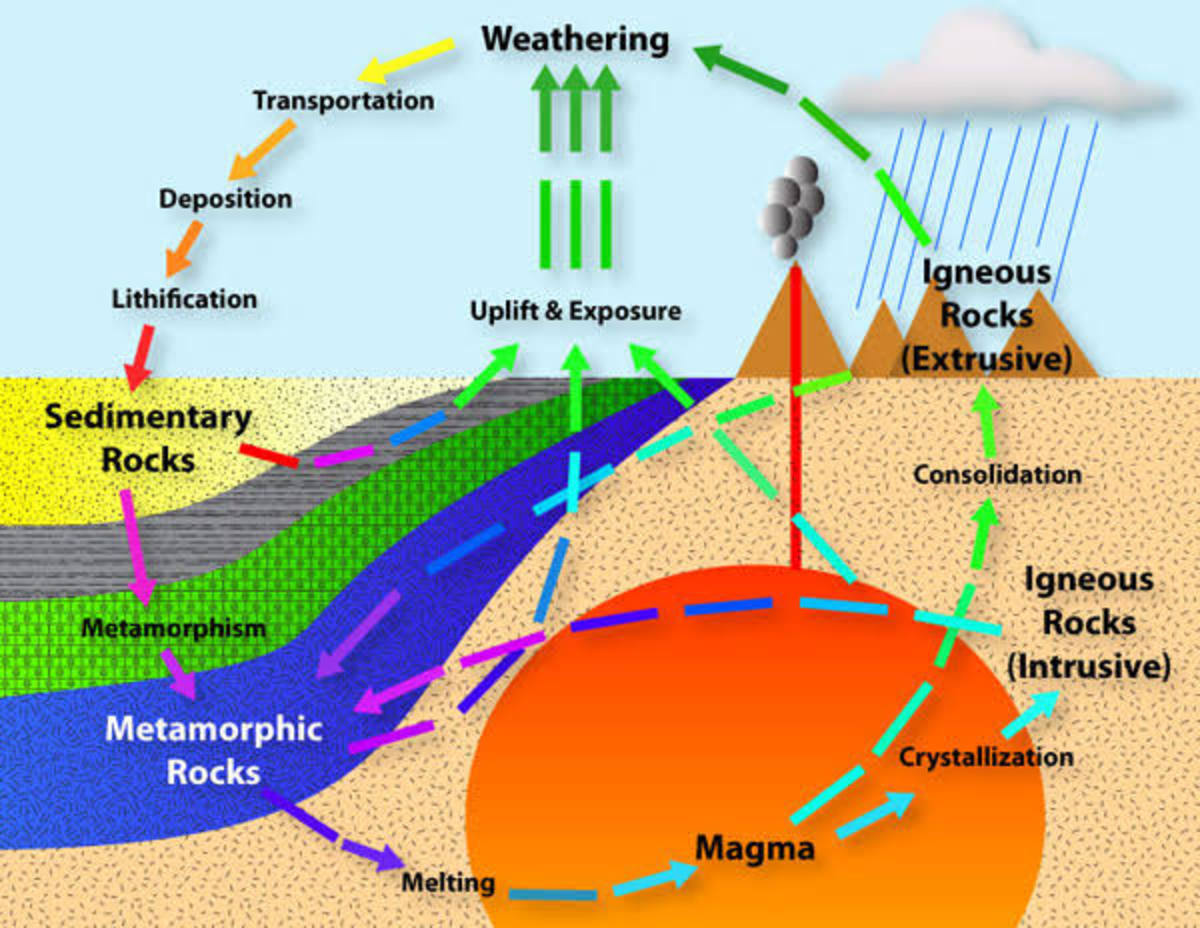Sandy: Once In A Generation?
Foreword
Superstorm Sandy, as of this revision, is three months past. Yet the effects will continue to reverberate for a long time--just as the effects of Hurricane Katrina continue to do.
Sandy, some have suggested, helped President Obama to his decisive electoral win. That may or may not be so, but it is certainly true that Sandy led Mayor Bloomberg to endorse the President--albeit in a state Mr. Obama was set to win anyway.
More importantly, Sandy significantly altered the discourse around the topic of climate change. Clearly, for Governor Andrew Cuomo at least, and probably for considerable numbers of people, the fact of climate change (if not always its cause) has become incontrovertible.
This Hub will periodically revisit the question of Sandy's influence. The original posts around the storm can be found below, under the heading "The Storm, As It Was Unfolding." More recent updates will be above, in reverse chronological order--approximately! (That is, the most recent (mostly) toward the top.)
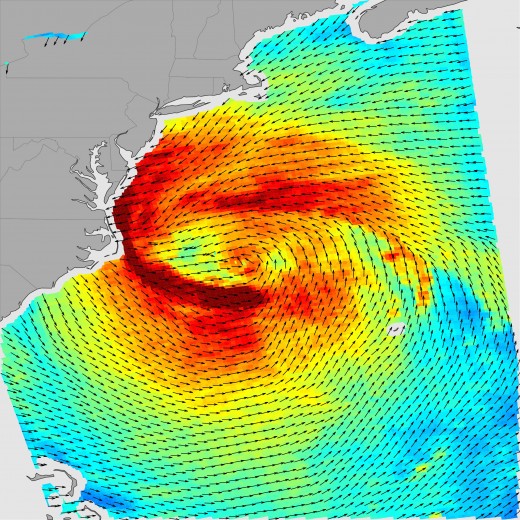
- NASA - Hurricane Sandy (Atlantic Ocean)
The scenes of devastation and wreckage that Hurricanes Sandy (2012) and Katrina (2005) left behind were tragically similar. But the storms differed in important ways, too. Here's a summary.
- Sandy's Staggering Tallies: 3 Months Later - weather.com
Get the latest weather news from weather.com. Here are the latest tallies from Sandy, the second most expensive storm in U.S. history.
January 30, 2013
According to the Weather Channel, Sandy is now blamed for 146 deaths in the US, as well as 71 in the Caribbean. (Presumably the Canadian death toll remains unchanged.)
In New York and New Jersey a total of 651,000 'housing units' are reported to have been destroyed, and 455,000 businesses affected. Insurance giant Munich RE reports $50 billion in total losses; the states put that figure at $62 billion. Congress has approved two aid packages totaling $60.2 billion, roughly what President Obama had requested.
But recovery, as always, is slow. As the Weather Channel story reports:
At least 3,500 families in New York and New Jersey are still living in hotels and motels on the dime of the Federal Emergency Management Agency. As winter has settled in, people who still have homes but no means to heat them have taken refuge in tents set up by aid workers.Some people are still living in mold-infested homes. Others are trying to persuade the city to tear theirs down. Small businesses are shutting down in neighborhoods where nobody seems to shop anymore.
Redrawn federal maps indicating flood-prone areas may force many property owners, especially in New York or New Jersey, to pay exorbitantly for flood insurance, raise their homes or move away altogether. In New Jersey, flood insurance premiums could cost as much as $31,000 a year.
In New York, a commission formed to examine ways to guard against future storms has called for flood walls in subways, water pumps at airports and sea barriers along the coast. It's unclear whether enough money can be found for all the expensive recommendations.
- Hurricane Sandy deals big blow to N.J. towns' property tax rolls | NJ.com
As property values drop, mayors and school boards must decide between cutting services or programs, raising taxes or seeking additional revenue from other sources if they want to keep the status quo.
April 4, 2013
As spring comes to the Northeast, the process of recovery continues.
Coming to the fore is a financial question: for some localities, up to a third of their tax base was wiped away with the destruction of beachfront properties. Matoloking, NJ, was particularly hard hit, for instance, losing nearly a third of the value of its existing tax base.
Local officials there and elsewhere must decide how to respond: cut services, raise taxes or borrow--even as, ironically, their government's credit ratings may be at risk of downgrade.
Of course, state and Federal assistance is helping. But with those budgets tight, too, it's not clear just how this will all play out.
What is clear is that the economic blow Sandy dealt will have effects that last for a long time to come.
The Storm, As It Was Unfolding
As dawn broke over Manhatten on the last day of October, 2012, it was already clear that Sandy, the hurricane-turned-post-tropical-cyclone, had dealt the city a devastating blow: the storm surge had muscled its way over seawalls from the Battery on up, submerging vehicles, filling subway tunnels, and shorting out elements of the power grid. One woman, awakening, thought she smelt the old fish market, gone for years; in reality, it was the sea brine and wrack outside her front door.
Amateur videographers had captured transformers exploding in bunches, like Fourth of July fireworks, before the power went down altogether, leaving an estimated six million people in the dark. By noon, the estimate had risen to eight million, and Consolidated Edison refused to estimate how long restoration would take. Fire broke out in Breezy Point, Queens; fire-fighters had to use boats to rescue 25 people trapped in upstairs apartments. 80 homes are reported destroyed.
"We have not seen damage like this in a generation," said New York governor Andrew Cuomo.
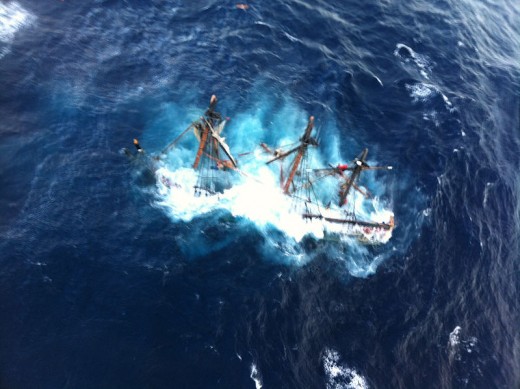
Nor was the Big Apple the only area affected. Sandy had earlier killed a reported 68 people in the Caribbean, mostly in Haiti. But by the morning of the 30th, flooding and power loss were extensive throughout New Jersey. Delaware was reportedly 'at a standstill,' with a complete driving ban in effect. The Mid-Atlantic coast had been pummeled hard already, with piers broken in half and coastal areas flooded.
Off the North Carolina coast, the tall ship Bounty--built in Nova Scotia for the Marlon Brando movie "Mutiny On The Bounty"--had to be abandoned as she foundered in heavy seas off Cape Hatteras. One crew member died and the captain is still missing.
Sandy's precipitation has been falling as heavy snow in West Virginia and Tennessee, where blizzard warnings were posted. Accumulations of three feet were predicted, and one woman had been killed in a snow-related traffic accident. And on the western fringes of the storm, over 50,000 people in the Toronto area were without power. One Toronto woman died when she was struck by flying debris.
Early estimates of the economic cost vary widely: Monday saw estimates of $5-10 billion in insured losses, and $10-20 billion in economic damages. The highest estimate reached $100 billion.
The New York Times called the hurricane a "once in a generation" event, inspired, perhaps, by Governor Cuomo.
Is that true?
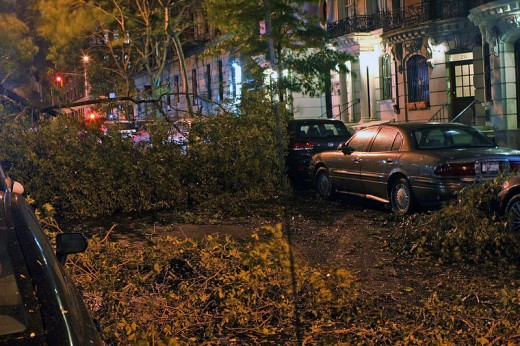
Three recent scientific papers suggest that it may not prove to be. None, of course, addressed Sandy specifically; superstorms, like other weather, are not predictable months in advance. Yet the implications suggest that this disaster may be less of a fluke than might at first appear.
Most clearly pertinent is Francis and Vavrus (2012), which appeared earlier this year in Geophysical Research Letters, under the title Evidence linking Arctic amplification to extreme weather in mid-latitudes. The abstract--a summary customarily preceding the main body of a scientific paper--explains.
Arctic amplification (AA) – the observed enhanced warming in high northern latitudes relative to the northern hemisphere – is evident in lower-tropospheric temperatures… Daily [data] over N. America and the N. Atlantic [is used] to assesses changes in north-south (Rossby) wave characteristics… Two effects are identified that each contribute to a slower eastward progression of Rossby waves in the upper-level flow: 1) weakened zonal winds, and 2) increased wave amplitude. These effects are particularly evident in autumn and winter consistent with sea-ice loss, but are also apparent in summer, possibly related to earlier snow melt on high-latitude land. Slower progression of upper-level waves would cause associated weather patterns in mid-latitudes to be more persistent, which may lead to an increased probability of extreme weather events that result from prolonged conditions, such as drought, flooding, cold spells, and heat waves.
- Dr. Jeff Masters' WunderBlog : Arctic sea ice loss tied to unusual jet stream patterns | Weather Und
Weather Underground provides local & long range Weather Forecast, weather reports, maps & tropical weather conditions for locations worldwide.
The other papers are Jaiser et al (2012), in Tellus, and Liu et al (2012), in the Proceedings of the National Academy of Sciences; both papers linked declining Arctic sea ice to blocking events, which can lead to outbreaks of severe wintery weather in the mid-latitudes.
So what might this have to do with Sandy?
Well, on the 25th, when Sandy was approaching the Bahamas, Harry Enten wrote in the UK's Guardian:
The 2011 meteorological autumn was unusual in that both a hurricane and an October snowstorm hit the north-east. They occurred two months apart, and the idea that either one would happen again in the near-term was not something high up on the probability scale. But if there is one thing more unpredictable than politics, it's the weather.
Government forecasters are warning that the US east coast is likely to be battered next week, not by a winter storm or a hurricane, but by an unusual combination of steady gale-force winds, flooding, heavy rain and possibly snow. It has already been dubbed the "snor'eastercane"…
The kicker here is that the jet stream, which carries weather systems across the country, is coming along at the perfect time and will block the eastward movement of Sandy.
The jet will force the storm to head due north. The jet should then pick up the storm and bring it back towards to the coast. The result is a five day projection of Sandy as a tropical storm (ie winds of 39-74mph) into New York City by Tuesday midday.
Not too shabby for a 5-day projection. As it turned out, Sandy sped up, hitting New York just about high tide on Monday. And she had changed character, morphing into a "post-tropical cyclone." But the track was about right, and the winds recorded were consistent with the projection, too.
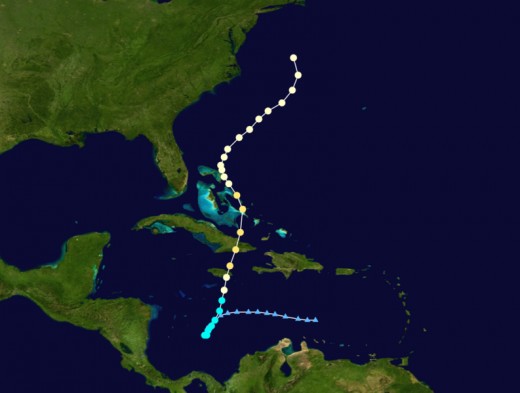
- Hurricane Sandy barrels towards the US – will it really be the end of days? | World news | guardian.
Harry J Enten: Forecasters are predicting an unusual degree of severe weather, but it's much too early for the hurricane hysteria to kick in.
Moreover, for most of the way, Sandy's path led over waters that were anomalously warm--up to 5 degrees Celcius, which is quite a lot. Warm waters feed energy into hurricanes.
So if a slowed and more meandering jet stream ("weakened zonal winds" and "increased [Rossby] wave amplitude")--caused, perhaps, by the unusually low Arctic sea ice--steered Sandy; and if warmer-than-usual sea surface temperatures in the Western Atlantic--clearly related to the warming climate--strengthened her; then both shaped the ongoing disaster. To ask the question in an over-simplified way, was Sandy 'caused' by human-induced global warming?
The short answer would be "No, but AGW may have contributed." Or, as Dr. Andrew Weaver of the University of Victoria more colorfully put it, "The ingredients of this storm seem a little bit cooked by climate change, but the overall storm is difficult to attribute to global warming."
In other words, Sandy very possibly would have existed without AGW. But she likely would not have gone where she went, nor become as strong as she did.
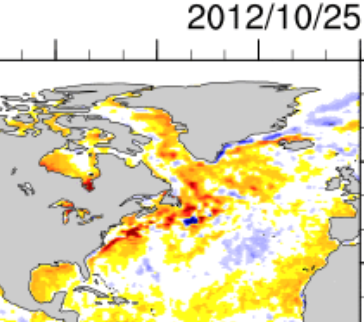
- The "Frankenstorm" and Global Warming - NYTimes.com
Putting the "Frankenstorm" called Sandy in broader climate context. - Frankenstorm: Has Climate Change Created A Monster? : 13.7: Cosmos And Culture : NPR
This year, Americans saw a strangely warm winter, a ridiculously hot summer and extreme drought conditions. As Hurricane Sandy advances on the East Coast, folks may be wondering if climate change has come to pass. Let's see what science can tell us. - Scientists: Global warming didn't brew superstorm, but it might have heated up key ingredien
Climate scientist Michael Oppenheimer stood along the Hudson River and watched his research come to life as Hurricane Sandy blew through New York. - http://www.newscenterpk.com/was-hurricane-sandy-supersized-by-climate-change/
An even-handed description of the ways in which climate change may have 'juiced' Sandy, written before landfall.
The long answer… well, there isn't a long answer. Not yet. There are initial impressions, and differing opinions, and there is spin. Sharp minds are inquiring already, and more understanding will come, in time. But reading the various views in play now show that the question isn't settled. (See sidebar links.)
Something analogous has been happening during this strange day of October 30, 2012. This morning the numbers were crisp and stark: 6.8 million people were without power. 18 had died. Tonight, the picture is hazier: NBC says that 46 people were killed by Sandy; CBS says "at least 50." NBC reports that 6.6 million "individual structures" are without power; the number of actual people would be higher, but by how much is unknown. CBS says 8.2 million "households," adding later in the report that the Breezy Point fire "destroyed as many as 100 houses." NBC claimed that destruction claimed "at least 110," and that 20 more were damaged. Morning's seeming certainties are tonight's confusion.
But clarity will come. The missing will be accounted for; power will be restored to the last customer; and eventually, the last entry will be written in the computerized ledger tallying all the costs. Sandy will be history.
Similarly, the meteorological and climatological contributing factors will be sorted out. We'll know, at some point, just how much the sea ice did, or did not, shape the meanders of this October's jet stream--or, if not that, then at least how much it does so in general. We'll know more precisely how those warm waters powered Sandy up into the most widespread cyclone observed in the Atlantic, and we'll know in more detail just how unusual the temperatures were in context.
But it's already clear that Sandy has been a huge blow to the Northeast--big enough to affect US GDP numbers for the last quarter of 2012. And it's clear that whether Sandy was 'caused' or 'influenced' or 'cooked' or 'steered' by AGW or not, we are experiencing a very different meteorological world. It's not just Sandy in 2012, after all; it's the massive drought, the record low sea ice, and, in the US, the warmest year on record.
We're not in Kansas anymore. We can't count on old certainties. Sandy's exact relationship to AGW may not be clear, but it is clear that asking whether global warming caused this disaster is not a fool's question. Rather the reverse: it is foolish, and criminally irresponsible, not to consider whether we are setting ourselves up for grave harms; not to ask what the cost of those harms might be; and not to prepare to deal with them.
(This may sound rhetorical: who would be so foolish? Yet there have been American legislative initiatives, both at state and federal levels, to ban agencies from taking climate change into account in their planning; and initiatives to defund climate-change research.)
If ordinary weather is a roll of the dice, then climate change can load them--load them to come up "drought, flooding, cold spells, and heat waves," as Francis and Vavrus put it.
And if they are loaded enough, another Sandy could come down the pike a lot sooner than Governor Cuomo might think.
A question for the candidates, 2007
Sandy News, November 1st, 2012
- Sandy: Five Latest Developments - weather.com
Hurricane and Tropical Storm news from The Weather Channel. Sandy produced major coastal flooding, winds in excess of 80 mph and knocked out power to millions. - From the devastating surge to crippling snow, Hurricane Sandy by the numbers - Capital Weather Gang
Superstorm Sandy slowly weakened over land Tuesday, but not before leaving behind a devastating trail of destruction across the Northeast and Mid-Atlantic.
Update--11/1/2012
As morning dawns on the Feast of All Saints, reports speak of the Northeast taking the first steps back to normalcy. In many of the jurisdictions affected more peripherally by the storm, power is largely restored, though millions are still without it in New York.
Transportation is coming to life again, slowly--ports are reopening, and even sections of the New York subway are now operating, though commutes are stitched together clumsily with shuttle bus links. By way of compensation, rides are free for the time being.
More somberly, the death toll continues to rise as rescue and recovery efforts continue. 74 people are now known to have been killed in the storm, from a variety of causes. The casualty numbers will likely continue to rise for some time.
And the snow disaster continues in the Appalachians--weather.com tells us that:
As much as 2-3' of snow fell in the mountains of Maryland and West Virginia, with lighter snows in Virginia, North Carolina, Tennessee, Kentucky, and Ohio.
"By sunrise Wednesday, 16 different locations in three states had reported at least two feet of snow," reports weather.com meteorologist Nick Wiltgen.
Of great concern is the situation of residents trapped in homes without heat. In West Virginia, the governor says that it may be days before power is completely restored. The National Guard is rescuing people and distributing meals--up to a planned 7 million, by the time the crisis passes.
Update Sources
- Superstorm Sandy's victims
Details on the lives lost as a result of Superstorm Sandy in late October 2012. - Hurricane Sandy: West Virginia, New York, Maine, And Many States In Between Recover From Superstorm
The massive storm that started out as Hurricane Sandy slammed into the East Coast and morphed into a huge and problematic system, killing at least 92 people in the United States. Power outages now stand at more than 3.8 million homes and businesses. - What to do if the '100-year flood' comes every year? | The CT Mirror
Discussion of changing climate norms and risk from CN. - Cuomo: 'New York has a 100-year flood every two years now' - UPI.com
New York Gov. Andrew Cuomo told reporters when inspecting the World Trade Center the state needs to rebuild for a "new reality" due to "extreme weather events." - Bloomberg Businessweek: "It's Global Warming, Stupid" | ThinkProgress
Reaction to Sandy's global warming connection and dealing with risk.
Update--2/11/2012
The morning of All Soul's day, November 2nd, sees National Public Radio reporting that the US death toll from the storm has now exceeded 90--CNN says, more precisely, that "at least 92" deaths are now confirmed. 48 people died in New York. That brings the hemispheric death toll from this storm to 161.
Power outages remain widespread, though down by about half from their peak. Huffington Post puts the numbers at "more than 3.8 million homes and businesses, down from a peak of 8.5 million."
Meanwhile, the focus on 'lessons learned' is increasing. One emphasis is on protective measures that come under the heading of "adaptation." The leading concept right now appears to be a massive storm surge barrier:
"The time has come. The city is finally going to have to face this," said oceanography professor Malcolm J. Bowman at Long Island's Stony Brook University. He has warned for years of the potential for a catastrophic storm surge in New York and has advocated for a barrier.
As outlined in the Associated Press story from which this quote is pulled, such a barrier would entail a multi-billion dollar price tag and a prolonged development process. Similar measures are in place in various places, from Providence, Rhode Island, to Saint Petersburg, Russia.
Other media outlets ponder the larger question of causes. It appears that many in New York and elsewhere are paying attention to the rapid succession of "100-year weather events," from Connecticut's DOE commissioner, Dan Esty, to New York's governor, Andrew Cuomo. Cuomo said on October 30:
I'm hopeful that not only will we rebuild this city and metropolitan area but use this as an opportunity to build it back smarter. There have been a series of extreme weather events. That is not a political statement; that is a factual statement," Cuomo told the reporters. "Anyone who says there is not a change in weather patterns is denying reality. We have a new reality when it comes to these weather patterns; we have an old infrastructure, we have old systems. That is not a good combination and that is one of the lessons I will take from this, personally.
Bloomberg business week (re-reported in Climate Progress) certainly takes a clear position.
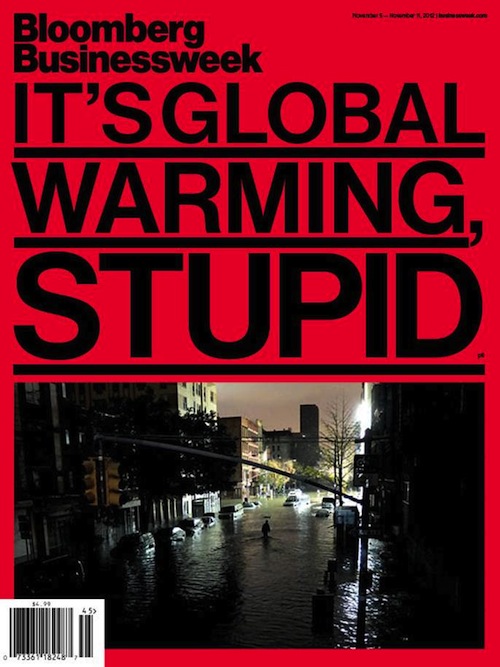
Update--11/2/2012, late
As of 11 PM on November 2nd, the US death toll had risen to 106, according to CNN.
Some loss estimates were up, too:
Disaster modeling company Eqecat estimated Sandy caused up to $20 billion in insured losses and $50 billion in economic losses, double its previous forecast. New York Comptroller Thomas DiNapoli estimated economic losses of $15 billion to $18 billion in New York state alone.
Tempers were starting to fray in some areas, as the strain of waiting for improvements started to tell; police had to respond to gas line disputes, as lines snaked around blocks. "They forgot about us," said one Staten Island resident.
Update--11/4/2012
As of 7 AM Eastern Time, Sunday, November 4, the death toll had not increased further.
New York's subway service, remarkably, is reported 80-90% restored, and the gas shortages are diminishing:
...the U.S. Energy Information Administration reported no gas in 67% of metropolitan New York stations on Friday, the federal agency estimated that figure plummeted to 38% on Saturday.
Some of this is due to direct corporate or government action. The Federal government has brought in 12 million gallons of fuel, and Hess was approvingly cited by Mayor Bloomberg for supplying gasoline to other companies' stations. But much is also due to the restoration of electricity to stations which may have had fuel in their tanks, but needed power to pump it.
Restoration of power is still far from complete, however--the linked CNN report says that "More than 835,000 customers were [still] in the dark statewide by mid-afternoon [Saturday]." Over the entire region affected by Sandy, the number is reported to be 2.4 million.
In pockets of New York, there is frustration and anger:
Several residents in the Rockaways, in Queens, vented their frustrations at New York Mayor Michael Bloomberg as he toured the area Saturday. One woman yelled, "When are we going to get some help!" while a man talked about "old ladies in my building who have got nothing."
To that mixture of emotions, one should add fear. While the temperatures had remained relatively high following Sandy's strike, that appears to be changing. Sunday's overnight low is predicted to be below freezing in Manhatten, and highs throughout much of the region will struggle to reach the 50s.
Worse, forecast models predict the possibility of a Nor'easter developing by Wednesday. "I can't believe it," exclaimed New Jersey governor Chris Christie.
- Nor'easter may 'add insult to injury' following Sandy; NYC commuting remains a challenge - U.S. News
Update 11/5/2012 source - U.S. News - sandy
A current summary, with links, to online NBC News Sandy stories. - Sandy U.S. death toll surpasses 110; more than 1 million remain without power - National Environment
In the aftermath of Superstorm Sandy which devastated the Northeast, the U.S. death toll has risen over 110 with more than 1 million still without power.
Update: 11/5/2012
In the morning, CNN reported a US death toll of 110 people. But later in the day, other media updated that number to 117.
Most New Yorkers are going back to work as the new week begins. Some tunnels under the East River are back in service, but service will not reach normal levels. Some routes remain down, and fewer trains than usual are running. The commute is expected to be "challenging."
The schools are reopening as well:
Mayor Michael Bloomberg told reporters he expected to take the subway to work on Monday. He will be joined by many of the students returning to class in the nation's largest school system. About 90 percent of the 1,700 schools will reopen for the first time since Sandy hit last Monday, the mayor said.
1.9 million people are still without power, and heat is a major issue for them. The process of restoration is expected to be slowed midweek by a predicted Nor-easter storm:
"Though this storm will not have near the magnitude of the impact Sandy had, the combination of rain, wind and snow will add insult to injury for the recovery process along the East Coast," The Weather Channel’s Chris Dolce reported.
- CBC News - Interactive - Before and After: Hurricane Sandy
Before and after photos of the aftermath of Hurricane Sandy. - Sandy's volatile path revealed in computer animation - Technology & Science - CBC News
A new computer animation reveals the explosive and erratic development of superstorm Sandy. - UD researchers show Sandy's explosive development
Update--11/6/2012
The focus is shifting toward the housing problem--something like 200,000 people need places to live in the greater New York area. FEMA and local officials are attempting to facilitate placements in apartments, hotels and other spaces, but it is not an area with high vacancy rates.
Some photos illustrating was has happened have been made available; see the CBC story linked in the sidebar. And a Delaware researcher has made a stunning animation of Sandy's development.
- Winter Storm Athena Forecast Impacts - weather.com
We spell out the four primary impacts of Athena and outline who will be affected the most and where.
Update--11/7/2012
The predicted misery of another storm--dubbed winter storm Athena--is materializing this hour, as rain and snow move into the areas affected by Sandy. Many residents still don't have power--and if tree limbs become laden with snow, we may well see additional outages.
Update--11/9/2012
Accurate death toll figures are becoming increasingly difficult to find as Sandy fades from the news cycle. But NPR news gave a figure of 124 on November 8, and at least one published report cited 121 deaths.
Meanwhile, the Nor'easter which struck Wednesday dumped up to a foot of snow, causing hundreds of thousands of new power outages. Some who had power restored lost it once more; others have been without power for 11 days.
Governor Cuomo announced that New York may lose $33 billion due to Sandy's effects, and considered the future in light of Sandy:
”Look how fast you can shut down the region, just by shutting town the pumps,” he said, adding that officials must examine what, where and how to rebuild infrastructure so the region is not hampered in the future.
December 10, 2012
As with Katrina, for many Sandy is rapidly receding into memory, but for the victims the reality has not changed very much. Recovery is painfully slow.
“We have not restored service to the full capacity, we’re nowhere near normal operations and that won’t be for quite some time,” Lhota said. “It’s important to remember that hundreds of millions of gallons of salt water completely inundated our system that’s over 100-years-old. We will be feeling the residual effect of this storm for months if not years to come.”
Among the biggest jobs is the total restoration of the relatively new South Ferry terminal, which is expected to cost $600 million.
“South Ferry was destroyed. It wasn’t hurt. It wasn’t wrecked. It was destroyed – from top to bottom,” Lhota said last month.
For thousands of private citizens, progress is just as painfully slow. Since private insurance is expected to be the first avenue for funding each individual's or family's recovery, FEMA checks typically amount to perhaps 10% of losses--welcome, helpful, but a bare start. And documenting losses while financially strapped and living in temporary housing is not quick nor easy.
- Lhota, Christie Head To Washington To Talk Sandy Impact And Recovery « CBS New York
Democrats on Capitol Hill said President Barack Obama plans to ask Congress for about $50 billion in additional emergency aid for states hit by the storm. - Superstorm Sandy Victims: Federal Aid Can't Come Fast Enough « CBS New York
Superstorm Sandy victims had their sights Saturday on Washington, D.C., hoping to avoid political gridlock as they work to get the money needed to recover from the storm.
The price tag for Sandy seems to be rising, as well. Governor Christy of New Jersey, asked for a reported $83 billion from President Obama, to be divided among the three states most affected. President Obama, in turn, asked Congress for $60, to be apportioned among all 11 affected states. It is unclear what an austerity-minded House will agree to, with the 'fiscal cliff' looming.
Either way, these amounts would be intended for reconstruction, and should presumably be counted as 'replacement costs' for actual losses. Economic losses will add billions to the price tag, but it will take time to understand these with any clarity. Already, reports of the effects on employment are contradictory.
Elsewhere, the numbers have been noted with--indignation, perhaps? Kumi Naidoo of Greenpeace international took note of the inadequacy of the proposals under consideration at the Congress of Parties Conference 18 in Doha, Qatar, pointedly contrasting the $60 billion figure President Obama requested with the $100 billion fund proposed to channel funds from developed to developing economies to cope with the effects of climate change.
How is it, he asks, that if a single storm can cost $60 billion in one region of the US, $100 billion can for one moment be considered adequate recompense from the entire developed world to the entire developing world?
It is not an easy question to answer.
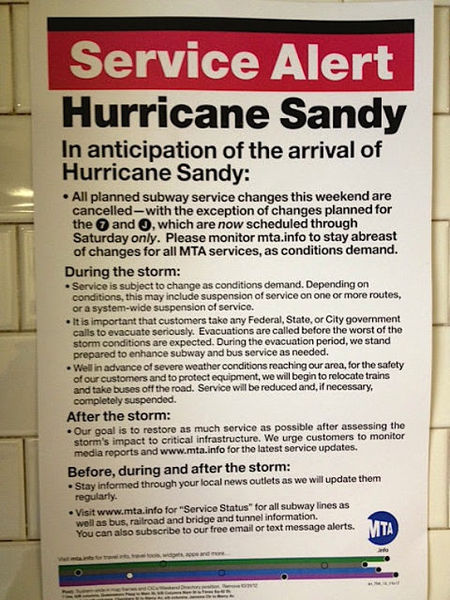
Other Hubs by Doc Snow
- Not. One. Word.
The economy, foreign policy, justice--all weighty issues touched upon in the Presidential and Vice-Presidential debates of 2012. But the issue that will shape more lives for good or ill for longer was conspicuous by its absence. - Sea Ice Loss 2012: What Do The Records Mean?
Labor Day 2012 saw shocking new record lows for Arctic sea ice--and the records continued dropping. Here's the larger context, and why you should care. - A Love Story And A Clearance Sale
Arctic sea ice is 'far away' for most of us--but will it become 'long ago', too? There's reason to fear just that--here's why the author cares, and why more practically-minded readers should, too. - Can Mr. Romney Deliver A Prosperous Economy?
Mr. Romney promises a prosperous America as a result of his 'pro-growth' policies. What are the chances that he can deliver?

